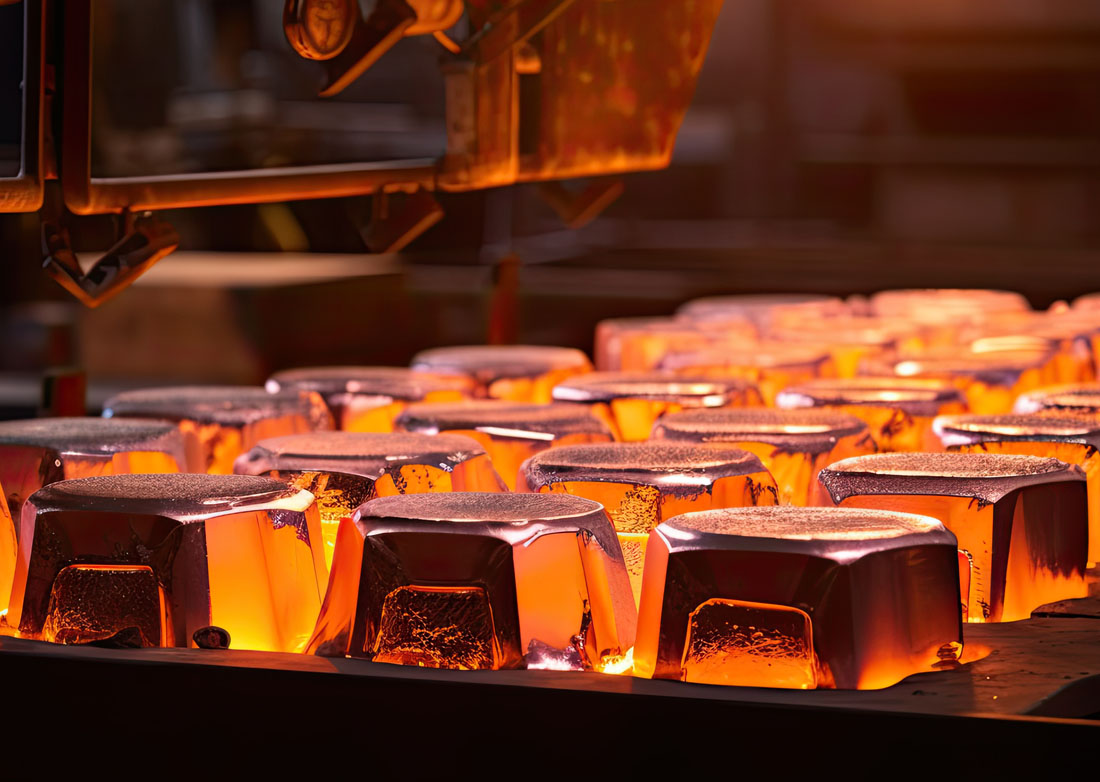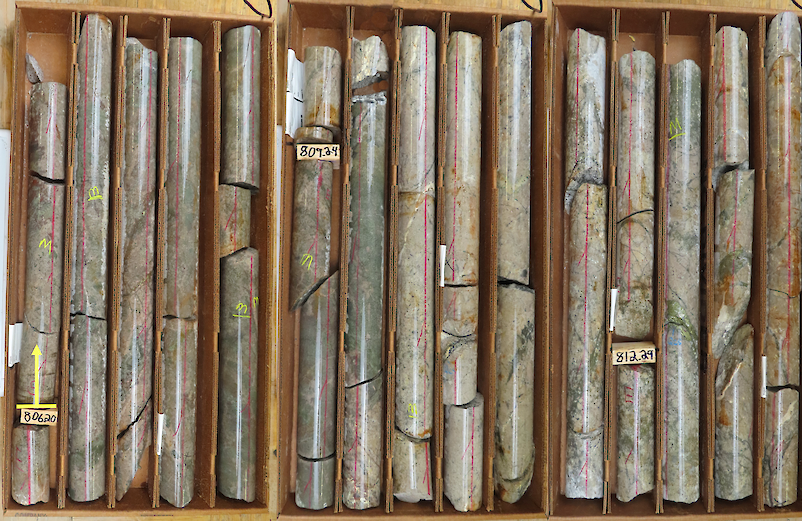TICKERS: AMY; AMYZ; 2AM
J. Peter Zhang: U.S. Manganese Supply Is a Strategic Necessity
Interview
Source: Zig Lambo of The Critical Metals Report (10/4/11)
 North America needs to develop a domestic Electrolytic Manganese Metal (EMM) supply, says JF Zhang Associates' Principal Consultant and Chief China Strategist J. Peter Zhang. In this exclusive interview with The Critical Metals Report, he explains the far-reaching implications EMM and REE supply have for the global economy, highlighting America's best bet for developing an advanced, cost-effective supply source—and the reasons investors may want to be part of it.
North America needs to develop a domestic Electrolytic Manganese Metal (EMM) supply, says JF Zhang Associates' Principal Consultant and Chief China Strategist J. Peter Zhang. In this exclusive interview with The Critical Metals Report, he explains the far-reaching implications EMM and REE supply have for the global economy, highlighting America's best bet for developing an advanced, cost-effective supply source—and the reasons investors may want to be part of it.
Peter Zhang: There really is no electrolytic manganese metals production in U.S. or anywhere outside China except for a small percentage from South Africa. We don't produce even a single ounce in North America. Relying on other countries to supply essential commodities (like oil for instance) is always a problem. If China suddenly decided to reduce production, or in the likely event that its domestic demand increases, the world would be out of options. Policymakers need to understand this risk and Congress needs to take action to minimize the potential impacts.
From end of 2008 to 2009, China tied things up in the rare earth element supply sector. Since then, the price has doubled, tripled and quadrupled. That should be a wakeup call. North America needs to either establish a strategic reserve system for critical metals or build production capacity to mitigate supply risk. I think there is some sense of urgency right now, but a lot more needs to be done.
TCMR: What is the difference between EMM, ferromanganese and silicomanganese? Are those metallurgical applications while EMM is the pure metal?
PZ: That's right. They all are ferroalloys. The pure manganese metal, EMM, is much harder to extract. It goes through grinding, leaching and purification, then a special process called electrolysis. The last step is where the cost of electricity comes into play. Ferromanganese and silicomanganese production doesn't consume a lot of electricity. EMM does. That's really where you see the price difference.
TCMR: So the challenge is to get as pure a manganese metal as possible.
PZ: Yes. The steel industry is a big driver of EMM consumption, particularly in the production of 200 series stainless steel. There are three categories of stainless steel and 200 is the lowest and most popular class in China. Demand for 200 series stainless steel has tripled from 2006 and could double again by 2015 in China, because the nation lacks nickel resources and there is no option but to accept the lower-quality stainless steel. This will drive EMM demand even higher
TCMR: Another growth application for manganese, apparently, is lithium-ion manganese batteries. That has become a huge market as more electric cars are built and more applications are developed for batteries. What is going to happen with that?
PZ: I am certainly not an electric car expert, but could put it into context in terms of manganese. There are a number of battery technology options in the market, but the lithium-ion manganese dioxide battery technology is a serious contender due to its high capacity, power density and good discharge performance. Once this technology is matured, it could open additional revenue opportunities for any company that begins production of manganese products in the U.S.
TCMR: What is the size of the worldwide manganese resources at this point? Are they somewhat defined? How quickly are they being depleted?
PZ: The U.S. Geological Survey's study of manganese reserves outlined a limited quantity of high-quality ore with total reserve of 540 million tons globally. Australia and Africa offer some of the highest grades of manganese. North America, unfortunately, just isn't home to a lot of high-grade manganese deposits. That is why the method for extracting metals from the ore could be the game changer for companies vying to fulfill domestic demand. The better the extraction technology, the more likely the company is to be a frontrunner.
For example, American Manganese Inc. (AMY:TSX.V; AMYZ:OTCPK; 2AM:Fkft) has a large resource in Arizona with good infrastructure. The grade of the deposit is not as high as those in South Africa, but it is one of the largest manganese deposits in the United States. The company has been actively working on a new hydrometallurgical process to extract lower-grade manganese into the high-purity metal. If that proves to be a reliable solution, then that will change the way manganese is produced on this continent. The cost of producing EMM using this innovative technology is much lower and energy-efficient than the method Chinese producers use. That could change China's dominance over global EMM supply.
TCMR: Will that process be applicable to a variety of deposits? Or is it somewhat unique to American Manganese?
PZ: My understanding is the successful pilot testing done is designed to leverage the deposits in American Manganese Inc.'s Artillery Peak project. In general, the process is to resolve the lower-grade ore issue and to achieve a less energy-intensive purification process, simultaneously reducing environmental damage. Using this new technology could potentially make American Manganese a major player in the EMM world.
TCMR: How much manganese ore is actually mined in China vs. imported and processed there?
PZ: From the data we gathered, China depends on imported manganese ore partially because it is cheaper than mining manganese domestically. The ores in China are typically lower grade and hard to mine and extract. About 94% of the manganese reserves in China are a grade below 18%, and only 6% of the reserves are considered "rich manganese." Energy-intensive processing of low-grade EMM can be a challenge in a place like China, where the growing economy is straining energy supplies. High oil and thermal coal energy prices drive up the EMM costs. To conserve energy and enforce environmental safety regulations, the government is shutting down some smaller facilities that produce less than 5,000 tons/yr., or consume more than 6,000 kW/ton. That could take 500,000-700,000 tons of EMM production out of the market in the next few years. It won't happen overnight, but the closing-down and consolidation is happening. That will certainly increase the cost of EMM.
TCMR: I know that China has had significant environmental problems linked to rare earth processing. How is that impacting the market?
PZ: You are exactly right about China's environmental problems. China's economy is transitioning after more than 30 years on the export model—basically exporting massive amounts of low-priced goods to North America, Europe and anywhere else in the world by compensating workers with low wages and sacrificing the environment. The new model revolves around transforming China into a more domestic consumption-driven economy. The Chinese people are looking for a better quality of life and a cleaner place to live. That is forcing the government to focus on environment protection and to change the low-wage manufacturing model. The water and farm contamination reports coming out China are incredibly disturbing.
TCMR: Another potential impact on the cost of EMM is the continuing depreciation of the U.S. dollar relative to the Chinese Renminbi. What are the implications of that?
PZ: The implications are huge. In the past, Chinese suppliers benefitted from lower exchange rates. But in the past five years, the U.S. dollar has depreciated close to 23%. That trend most likely will continue as the trade deficit between U.S and China widens and U.S. will continue to push China to convert its currency freely. As a result, USD prices of precious metals produced in China, such as EMMs and REEs, will increase.
TCMR: If we have a growing demand for manganese in North America and limited supply, are there any other mining companies in North America that could help fill that need?
PZ: There are not too many players in this space so far. American Manganese Inc. has strong fundamentals and advanced technology, and they are well financed and moving forward to complete the feasibility study. I see a lot of potential for that project to move forward and become the very first North American EMM producer.
It could take the economy some time to recover, but I'm bullish on commodities. The economy is having hiccups right now but, in the long term, the emerging economies of India and China for example will need a lot of commodities. We just don't have enough. The world will not stop because of the European debt crisis or because of the continuing struggle between politicians in the United States. The economy will grow, period. The commodities are, in the long term, in high demand. Imagine that as much as 70% of China will be urbanized—they will need to build everything. We see American Manganese and other critical metals companies are being well positioned at this point for the long term.
TCMR: Do people recognize the potential yet?
PZ: We were one of the first groups to start studying rare earth policies and the impact on the commodities market outside China in late 2008 and early 2009. People thought we were crazy. A lot of investors are reactive instead of proactive. They look at the daily headlines and act based on that news. Many investors are not aware of critical metals and how they have been shaped by Asian emerging powers. They don't realize the impact these materials can have on daily life and the investing opportunity it presents.
TCMR: I greatly appreciate your time and your input.
PZ: Thank you for having me.
J. Peter Zhang is the principal consultant, chief China strategist, founder and director of JF Zhang Associates, a Vancouver-based advisory firm focusing on China-related investments. He is a member of North America Practice Committee of the Dacheng Law Office based in Beijing, China, board director of the Peter Tobin Business School Alumni Association at St John's University in New York, and founding director of Rara Terra Capital. He is also a columnist for China Press, one of the most circulated Chinese newspapers in the United States.
Want to read more exclusive Critical Metals Report articles like this? Sign up for our free e-newsletter, and you'll learn when new articles have been published. To see a list of recent interviews with industry analysts and commentators and learn more about critical metals companies, visit our Critical Metals Report page.
DISCLOSURE:
1) Zig Lambo of The Critical Metals Report conducted this interview. He personally and/or his family own shares of the following companies mentioned in this interview: None.
2) The following companies mentioned in the interview are sponsors of The Critical Metals Report: American Manganese.
3) J. Peter Zhang: I personally and/or my family own shares of the following companies mentioned in this interview: None.
4) J. Peter Zhang: JF Zhang Associates conducts marketing research, strategic advisory, and risk assessment business with companies mentioned in his interviews. This interview represents only J. Peter Zhang's personal view based on his research and experiences in the critical metals sector, therefore does not constitute any investment advice. Please consult your financial adviser for any investing decisions in critical metals-related matters.



































